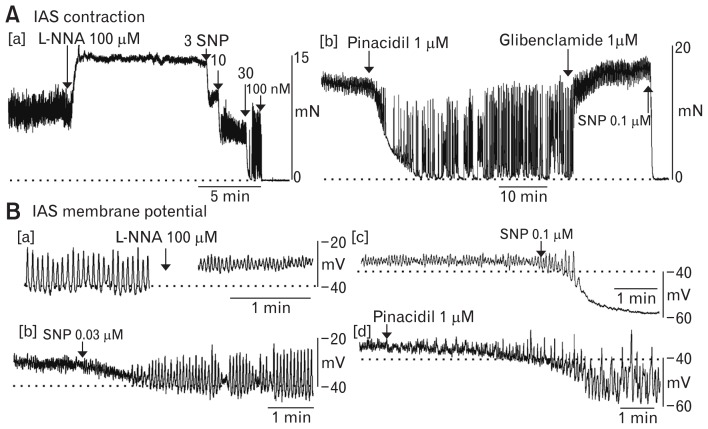Figure 6.
Changes in contractile and electrical activity in the Cynomolgus monkey internal anal sphincter (IAS) after application of various drugs. (A) Sample traces of contractile activity in the monkey IAS. [a] Tone and phasic activity were observed under control conditions. Following NOS blockade with Nω-Nitro-L-arginine (L-NNA; 100 μM) the amplitude of tone increased while phasic contractile amplitude decreased. This effect was reversed with 3–30 nM sodium nitroprusside (SNP) while the highest concentration of SNP (100 nM) abolished contraction. [b] Contractile activity in another muscle segment in the presence of L-NNA. The actions of 1 μM pinacidil were similar to those of 30 nM SNP and were reversed by 1 μM glibenclamide. Subsequent addition of SNP (100 nM) abolished all contractile activity. (B) Sample traces of electrical activity in the monkey IAS. [a] Slow waves (SWs) were present in the monkey IAS under control conditions (left). After addition of L-NNA membrane potential (Em) depolarized and SW amplitude was reduced (right). [b] Different microelectrode recording in the presence of L-NNA. SW activity was restored following addition of 30 nM SNP. [c] Different microelectrode recording in the presence of L-NNA. SNP (100 nM) resulted in a transient period of larger amplitude SWs followed by further hyperpolarization and blockade of SWs. [d] Different microelectrode recording in the presence of L-NNA. Pinacidil (1 μM) caused hyperpolarization and the return of SWs.34 Higher concentrations of pinacidil abolished contraction as well as SWs (data not shown).

